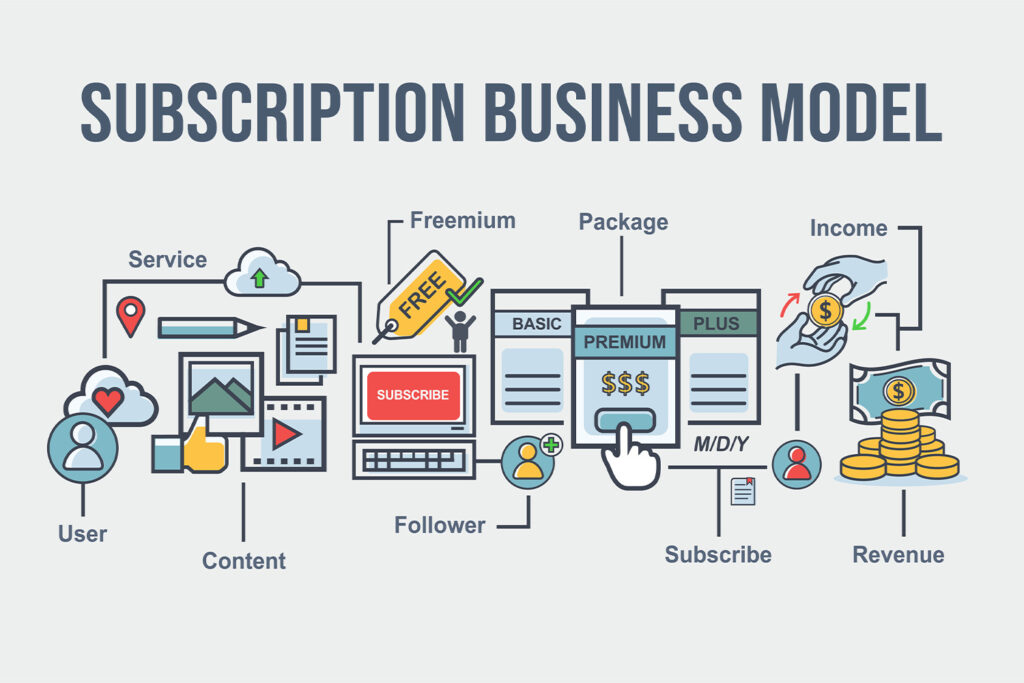When you think about how many subscriptions you have, you may consider starting your own subscription business to get in on this burgeoning business area. The good news is that it’s possible with the right amount of research, creativity, patience, effort, and expertise.
So here are seven ways that you can start a successful subscription business:
Should You Start a Subscription Business?
There are tons of different business models out there, so why should you start a subscription business? Here are some reasons why you should create a subscription business:
- Customer loyalty: A subscription business has customer loyalty essentially built into the business model. Customers are coming back every month, and you’re able to learn more about them and build a relationship with them along the way.
- Lower customer acquisition costs: Since you know your customers will stick around, you know that they’re going to be worth more. As a result, you don’t have to spend as much money recruiting new customers since you have a perfectly good revenue stream from your existing customers.
- Predictable revenue: Speaking of revenue stream, subscription businesses always have a good idea of how much revenue they’re generating since it’s relatively consistent from month to month. Of course, customers can cancel, but new customers can also join to take their place!
- Better cash flow: Subscription businesses have a unique ability to achieve better cash flow by offering discounts for full and upfront payments. This is particularly beneficial for new subscription businesses trying to get off the ground and cover expensive startup costs.
3 Different Types of Subscription Businesses
There are three different types of subscription businesses for you to consider: curation, replenishment, and access. Here’s what you need to know about each type so that you can choose the right one:
1. Curation
Within the “curation” subscription model, subscribers pay for a curated selection of items to be sent regularly. This is the most popular subscription business model as customers love being sent new and exciting items. Since customers don’t know what’s being included in the subscription, it builds anticipation and excitement.
If you’re interested in the curation model, it’s important to note that you shouldn’t send the same items to every subscriber. Instead, take a more personalized approach and take the time to learn more about each subscriber through initial surveys and monthly feedback so that you can better meet their needs and expectations.
2. Replenishment
Within the “replenishment” subscription model, subscribers are paying for an automated replenishment of frequently-used commodity items. This model helps customers save both time and money since they no longer have to physically go to the store and purchase these items themselves — often at higher prices as well.
Even if you already have a non-subscription-based company, you could easily incorporate a replenishment option to provide you with a consistent source of revenue and better serve your customers. On the other hand, if you’re looking to launch a replenishment subscription company from scratch, think about the items you regularly use that you always seem to need more of.
3. Access
Within the “access” subscription model, subscribers are paying for exclusive access to perks. The access subscription model is all about exclusivity — customers are willing to pay you for that “member” status. The access model works even better if you can develop a unique name for your members to make them feel even more important and valued.
But what kinds of access are subscribers paying for within this model? It varies. For instance, you could offer early access to new products, exclusive discounts, free samples, etc. You can also offer access to digital content — providing members with helpful guides and insight into a specific industry.
7 Ways to Start a Successful Subscription Business
Hopefully, you now have a better idea of how your subscription business should look. Now, we’re going to help you put all the pieces together to start a successful subscription business. Here’s what you need to do to make it happen:
1. Start With an Idea or Niche
First, you need to start with a good idea or overall niche for your subscription business. And while this idea doesn’t necessarily need to be unique, you still need to make sure that the area isn’t overly saturated with competing companies offering the same thing. Instead, look for gaps in the market or areas that can be improved upon and go from there.
2. Research the Market and Competitors
Once you have a better idea of what you want to do, you need to begin your research. First, check out the market and make sure that it’s growing and profitable. Second, check out potential competitors to see what they’re doing, what they’re charging, and who their customers are.
3. Research and Define Your Ideal Customer
While your competitors can provide insight into who your customers should be, you still need to perform additional research since your customer base shouldn’t be the same. Instead, think about who could benefit from your subscription services. Think about who is being left behind or under-served by your competitors.
From there, come up with a customer persona that goes beyond basic demographic indicators. A customer persona should read like a real person with information about wants, fears, motivations, hobbies, etc. Combine that with demographic information for a complete understanding of your target customers.
4. Develop Your Products or Services
Now you get to think about what products or services your target customer is looking for. Reach out to different suppliers, get product samples, and receive quotes so that you can start building your product offerings.
5. Set Your Prices
After you’ve decided on your products, you need to set your prices. There are several price models for subscription businesses to choose from, including flat-rate pricing, tiered pricing, usage-based pricing, and more. The good news is that it’s always possible for you to change your pricing if you find that it’s too low or too high.
6. Launch and Market Your Subscription Business
Finally, you’re ready to launch your subscription business! Before you launch and after that, you should invest in marketing efforts to spread the word about your new business and earn subscribers. Make sure that you’re advertising according to your target customer. Your content should be appealing to this specific group of people and placed in locations where they’re likely to see it.
7. Monitor Your Success and Make Necessary Changes
To run a successful subscription business, you need to be constantly monitoring your progress. Specifically, you need to keep track of KPIs like customer acquisition cost, monthly recurring revenue, average revenue per user, customer lifetime value, and gross MMR churn rate. If any of these KPIs are underperforming, you can make the necessary changes to get them — and your business — back on track.
Final Thoughts on Starting a Subscription Business
Launching a subscription business on your own or from home isn’t easy, but it’s more than possible with the right strategy and support. If you need support on the marketing side to get your business off the ground, you need to reach out to Greg Gillman. Greg Gillman works with direct-to-consumer brands to grow operations and earn revenue. He has helped his clients generate $4 billion in revenue, and he can help you, too.
Sources:
How to Start a Subscription Business: A Brief Guide | Shopify
The Rise of Curation: How Online Retailers Are Cutting Through the Noise | Forbes


